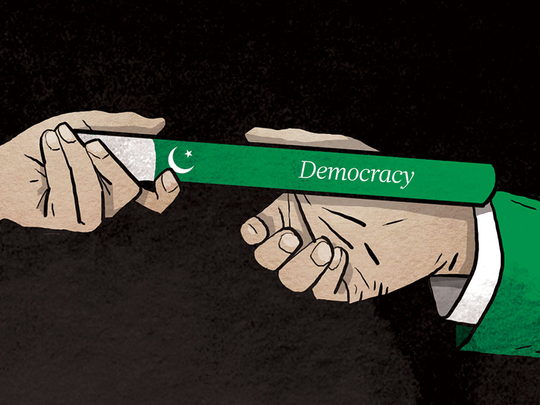
How did the Pakistan Peoples Party evolve, where is it now, and where is it likely to be after the elections on July 25? It was launched in 1967 as a populist party, and came into power in 1972 under Zulfiqar Ali Bhutto: a highly intelligent, charismatic, and experienced politician, who broke away from conventional politics.
Following up its socialist slogan to provide food, clothing, and shelter (Roti, Kapra, aur Makan), the PPP reached out to the masses. People felt empowered. It inducted individuals from all walks of life into political and governance positions who did not belong to the established political families.
Bhutto was responsible for restoring Pakistan’s position in the world and the country’s sense of pride after its dismemberment in 1971. He initiated the nuclear programme. The PPP’s ambitious agenda pushed through important legislation on human rights, social welfare, and labour rights. The 1973 Constitution was promulgated. Unfortunately decisions to nationalise the main businesses and the academic institutions set back Pakistan’s economy and development. There were not enough party members, bureaucrats, and technocrats, unlike the erstwhile USSR and China, with the experience to run the nationalised industries. Bhutto felt let down by the bureaucracy. The civil services’ constitutional safeguards were weakened; provisions were made for direct entry at all levels, to bring in new talent which was not a bad idea. But inevitably connections rather than merit prevailed. The bureaucracy’s morale declined, it became less cooperative towards the PPP. The iron frame on which governance rests continues to erode till today.
The downfall of the PPP was the 1977 elections. Allegations of extensive rigging may have been exaggerated, but party efforts to get Bhutto and 19 other leaders elected unopposed tarnished the democratic image of the PPP in the popular perception.
The execution of PM Bhutto was a most tragic occurrence. Someone summed up the popular sentiment when he said with sorrow that ‘the loss of such a fine mind the country could not afford’. It led to a long period of political vacuum. The fortunes of the PPP revived when Benazir returned to the country strengthened in the crucible of hardship, imprisonment and exile. Again whatever the weaknesses of governance when she took the PPP back into power, she was a democratic figure; a career cut short by assassination. In 2008, as earlier after the death of Zulfiqar Ali Bhutto, the public voted to express its sympathy, putting the party back into power. However the 2013 elections confined the party to its base in Sindh.
How will the party fare in the forthcoming elections? That is difficult to assess. Due to new dynamics, these will be the most unpredictable elections in Pakistan’s history. For the first time all three main parties, including the Pakistan Muslim League-Nawaz (PML-N) and Imran Khan’s Pakistan Tehreek-e-Insaf (PTI) face internal dissent from party workers unhappy with tickets given to certain candidates, and also dissent between leading party members. In Khyber Pakhtunkhwa, as the PTI itself admits, there is a tradition that the party in power does not win in the next elections.
Seizing lost ground
The indications are that the PPP will only dominate Sindh, with sympathisers in the other provinces but limited seats. With the MQM seriously weakened it will probably add urban seats to its assured rural base. Punjab, half the country, is likely to see the PML (N) win the major share, though the PTI may well do better than last time. It seems no one party will be able to dominate nationally and that coalitions are likely to ensue to form the federal government.
Where does that leave the PPP? The old guard led by former president Asif Ali Zardari, despite his experience and skill, lacks the charisma to seize lost ground. Although dynastic politics is not in principle consonant with democracy, in South Asia it is an accepted practice. The future of the party rests with the next generation, Bilawal Bhutto, to carry forward the legacy of his grandfather and mother. He is shaping up, progressing in public speaking, and projects well in interviews with the national and international media. He is still young but has the potential to move the PPP forward. But to do better it will also have to improve its performance within Sindh. Karachi is the face of the province. So far there has been no progress in tackling its major problems of public transport, water deprivation, and urban planning. Rural areas lag far behind, which unfortunately is true countrywide. The recent UNDP Human Development Report for Pakistan shows that despite claims to the contrary from Khyber Pakhtunkhwa, the best social indicators are in Punjab: but in certain urban areas, and of course Punjab has the most resources.
The PPP, like other Pakistani parties, has certain strengths and weaknesses. Its distinctiveness and value lay in the fact that after the Pakistan Muslim League, which led the movement for Pakistan, declined following the assassination of prime minister Liaquat Ali Khan in 1951, after two decades it too became not only a democratic movement but also a national party across Pakistan with a twin base in Punjab and Sindh. That remains a goal on which its future depends, and one that is a central objective for the other parties also.
Tariq Osman Hyder is a retired Pakistani diplomat.










